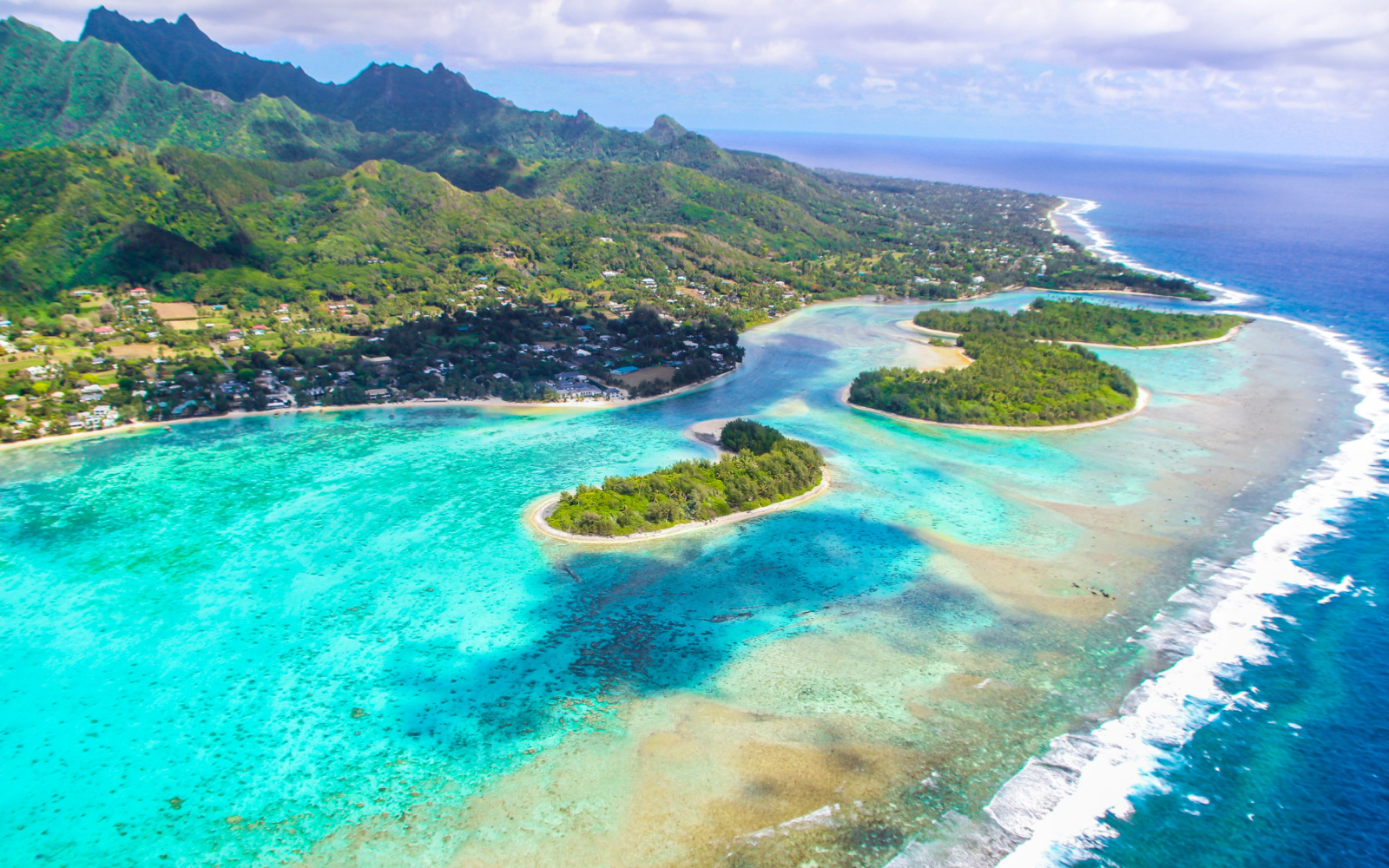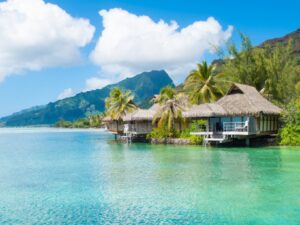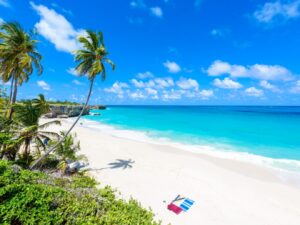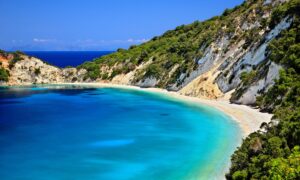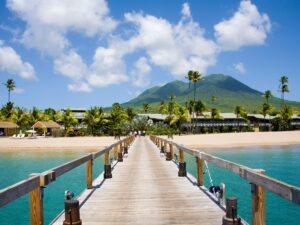Located in the heart of the Pacific Ocean, the Cook Islands is a hidden gem that offers a unique blend of natural beauty, rich culture, and warm hospitality. With its pristine beaches, crystal-clear turquoise waters, and lush tropical landscapes, it’s no wonder that this group of 15 islands is often referred to as “paradise on earth.” But when is the best time to visit this idyllic destination? In this article, we will explore the different seasons and weather patterns of the Cook Islands, helping you choose the perfect time to embark on your dream getaway.
1. Understanding the Cook Islands
Before we delve into the best time to travel to the Cook Islands, it’s important to understand the destination itself. The Cook Islands is an archipelago made up of 15 islands, each offering its own unique charm and attractions. The most populous island, Rarotonga, is known for its stunning beaches, vibrant markets, and lively nightlife. On the other hand, Aitutaki, renowned for its breathtaking lagoon, is a haven for snorkelers and divers. With so much to explore, it’s essential to plan your visit according to the best weather conditions.
2. The Seasons of the Cook Islands
The Cook Islands experiences a tropical climate, characterized by warm temperatures throughout the year. However, there are distinct seasons that can greatly influence your travel experience. Let’s take a closer look at each season and what it has to offer:
2.1 Summer (December to February)
Summer in the Cook Islands is the peak tourist season, attracting visitors from all over the world. During this time, the weather is hot and humid, with temperatures ranging from 24°C (75°F) to 29°C (84°F). The clear skies and warm waters make it the perfect time for beach activities, water sports, and exploring the vibrant marine life. However, it’s worth noting that the islands can be crowded, and prices for accommodation and flights tend to be higher than other seasons.
2.2 Autumn (March to May)
Autumn in the Cook Islands is a transitional season, with temperatures starting to cool down after the heat of summer. The weather remains pleasant, with temperatures ranging from 21°C (70°F) to 27°C (81°F). This is a great time to visit if you prefer a quieter and more affordable trip. The beaches are less crowded, and you can still enjoy plenty of sunshine and warm waters. It’s also an excellent time for hiking and exploring the lush rainforests that cover the islands.
2.3 Winter (June to August)
Winter in the Cook Islands brings cooler temperatures, ranging from 18°C (64°F) to 23°C (73°F). While it may not be the ideal time for swimming and sunbathing, it offers a unique opportunity to experience the local culture and immerse yourself in the traditional way of life. This is also the best time for whale watching, as humpback whales migrate through the Cook Islands during these months. Additionally, winter is the low season, meaning you can find great deals on accommodation and flights.
2.4 Spring (September to November)
Spring in the Cook Islands is a delightful time to visit, as the weather starts to warm up again after winter. Temperatures range from 19°C (66°F) to 25°C (77°F), creating the perfect conditions for outdoor activities. The islands are less crowded compared to the summer months, allowing you to explore the attractions at your own pace. It’s also a fantastic time for snorkeling and diving, as the underwater visibility is excellent. Spring is considered the shoulder season, offering a balance between pleasant weather and affordable prices.
3. Rainfall and Cyclone Season
While the Cook Islands generally enjoy a tropical climate, it’s important to consider the rainfall patterns and the possibility of cyclones. The rainy season typically falls between November and March, with December and January being the wettest months. During this time, short and intense rain showers are common, but they usually pass quickly, leaving behind clear skies. It’s advisable to pack a light rain jacket or umbrella to be prepared for any unexpected showers.
Cyclones are rare but can occur in the Cook Islands. The cyclone season runs from November to April, with the highest likelihood of cyclones in February and March. It’s essential to stay informed about weather updates and follow the advice of local authorities if a cyclone is forecasted. Travel insurance that covers trip disruptions is highly recommended during this period.
4. Special Events and Festivals
The Cook Islands is not only known for its natural beauty but also for its vibrant culture and lively festivals. If you’re interested in immersing yourself in the local traditions and celebrations, timing your visit to coincide with these special events can enhance your experience. Here are a few notable festivals and events to consider:
- Te Maeva Nui Festival (July): This annual cultural event celebrates the Cook Islands’ independence and showcases traditional music, dance, and arts.
- Marine Metre Squared (September): A community-led conservation event that encourages locals and visitors to explore and document marine life along the coastline.
- Takurua Season (June to July): During this season, the Cook Islands honor their connection to the sea and celebrate the start of the whale-watching season.
5. Choosing the Best Time for Your Activities
The best time to travel to the Cook Islands greatly depends on the activities you have in mind. Whether you’re seeking relaxation on the beach, adventure in the water, or cultural immersion, here are some recommendations:
5.1 Beach and Water Activities
If your main goal is to soak up the sun and enjoy water activities like swimming, snorkeling, and kayaking, then the summer months (December to February) are ideal. The warm waters and calm conditions make it perfect for exploring the vibrant marine life and relaxing on the beaches. However, if you prefer a quieter and more affordable trip, consider visiting during the shoulder seasons of autumn (March to May) or spring (September to November).
5.2 Hiking and Nature Exploration
The Cook Islands’ lush rainforests and scenic landscapes offer endless opportunities for hiking and nature exploration. The cooler temperatures of winter (June to August) make it a pleasant time for outdoor activities. The vegetation is lush, and the waterfalls are at their fullest during this season. If you don’t mind a bit of rain, visiting during the wet season (November to March) can also be rewarding, as the islands come alive with vibrant colors.
5.3 Cultural Immersion
To fully immerse yourself in the rich culture of the Cook Islands, consider planning your trip around special events and festivals. The Te Maeva Nui Festival in July is a fantastic opportunity to witness traditional dances, music, and arts. If you’re interested in marine conservation, the Marine Metre Squared event in September allows you to contribute to the protection of the islands’ precious marine ecosystem.
6. Frequently Asked Questions (FAQs)
6.1 Q: Is the Cook Islands safe to visit?
A: The Cook Islands is generally a safe destination for travelers. However, it’s always important to take standard precautions, such as securing your belongings and being aware of your surroundings. It’s also advisable to check the latest travel advisories from your home country before your trip.
6.2 Q: Do I need a visa to visit the Cook Islands?
A: Visitors from many countries, including the United States, Canada, Australia, New Zealand, and the United Kingdom, can enter the Cook Islands visa-free for up to 31 days. However, it’s essential to check the specific visa requirements based on your nationality.
6.3 Q: What currency is used in the Cook Islands?
A: The currency used in the Cook Islands is the New Zealand Dollar (NZD). Most businesses also accept major credit cards, and there are ATMs available on the main islands.
6.4 Q: Are there direct flights to the Cook Islands?
A: Yes, there are direct flights to the Cook Islands from several international destinations, including New Zealand, Australia, and Los Angeles. However, flight schedules may vary depending on the season, so it’s advisable to book your flights in advance.
6.5 Q: Are there any health considerations for visiting the Cook Islands?
A: It’s recommended to consult with a healthcare professional or travel clinic before your trip to the Cook Islands. They can provide information about necessary vaccinations and any other health considerations based on your individual circumstances.
7. Conclusion
The best time to travel to the Cook Islands depends on your preferences and the activities you wish to engage in. Whether you’re seeking relaxation on pristine beaches, thrilling water adventures, or immersing yourself in the vibrant culture, there is a perfect season for you. Consider the weather patterns, special events, and your desired activities when planning your trip. With its breathtaking beauty and warm hospitality, the Cook Islands promises an unforgettable experience that will leave you yearning to return.
8. Summary
To summarize, the Cook Islands is a paradise destination that offers stunning natural beauty, rich culture, and warm hospitality. The best time to visit depends on your preferences and the activities you plan to engage in. Summer (December to February) is ideal for beach activities and water sports, while autumn (March to May) offers a quieter and more affordable trip. Winter (June to August) is great for experiencing the local culture and whale watching, and spring (September to November) provides pleasant weather for outdoor activities and excellent underwater visibility for snorkeling and diving.
It’s important to consider the rainfall patterns and the possibility of cyclones, which occur between November and April. Pack accordingly and stay informed about weather updates during your visit. Additionally, timing your trip to coincide with special events and festivals like the Te Maeva Nui Festival or the Marine Metre Squared event can enhance your cultural experience.
Before traveling, it’s essential to check the latest travel advisories and visa requirements based on your nationality. The currency used in the Cook Islands is the New Zealand Dollar, and there are direct flights from several international destinations.
In conclusion, the Cook Islands is a destination that offers a slice of paradise in the Pacific Ocean. With its breathtaking landscapes, vibrant culture, and warm climate, it’s a dream destination for travelers seeking an unforgettable experience. By choosing the best time to visit based on your preferences and considering the weather patterns and special events, you can make the most of your trip to this idyllic paradise.
9. Frequently Asked Questions (FAQs)
9.1 Q: Is the tap water safe to drink in the Cook Islands?
A: While the tap water in the Cook Islands is generally considered safe to drink, it’s recommended to drink bottled water or use a water purification system for extra caution.
9.2 Q: What are some must-visit attractions in the Cook Islands?
A: Some must-visit attractions in the Cook Islands include Aitutaki Lagoon, Muri Beach, Te Rua Manga (the Needle), Titikaveka Beach, and Punanga Nui Market in Rarotonga.
9.3 Q: Are there any hiking trails in the Cook Islands?
A: Yes, the Cook Islands offer several hiking trails that allow you to explore the islands’ lush rainforests and enjoy stunning panoramic views. Some popular trails include the Cross Island Track in Rarotonga and the Ara Metua Ancient Road in Aitutaki.
9.4 Q: What is the local cuisine like in the Cook Islands?
A: The local cuisine in the Cook Islands is influenced by Polynesian, European, and Asian flavors. Some traditional dishes to try include ika mata (raw fish marinated in coconut milk), rukau (taro leaves cooked in coconut cream), and umu (a traditional underground oven-cooked feast).
9.5 Q: Are there any eco-friendly accommodation options in the Cook Islands?
A: Yes, there are eco-friendly accommodation options in the Cook Islands that prioritize sustainability and minimize their environmental impact. Look for resorts and lodges that have eco-certifications or practices such as solar power, water conservation, and waste management.
10. Conclusion
The Cook Islands is a paradise destination that offers a perfect blend of natural beauty, rich culture, and warm hospitality. By choosing the best time to visit based on your preferences and considering the weather patterns and special events, you can make the most of your trip to this idyllic paradise. Whether you’re seeking relaxation on pristine beaches, thrilling water adventures, or immersing yourself in the vibrant culture, the Cook Islands promises an unforgettable experience that will leave you yearning to return. So pack your bags, plan your trip, and get ready to create lifelong memories in this hidden gem of the Pacific Ocean.

